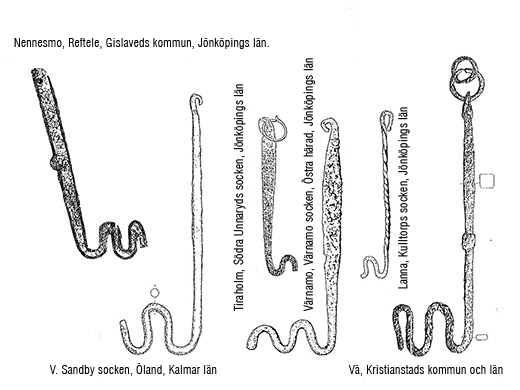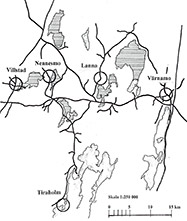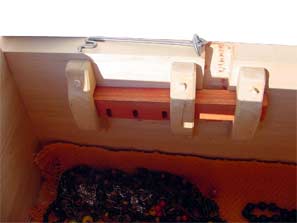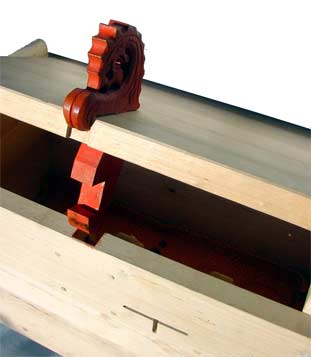Push keys lifted and moved a wooden bolt to one side or the other to lock and unlock it. They come in only two sizes, a larger one (about 18 cm) for chests and doors, and a smaller one (about 11 cm) for boxes. The shafts are narrow with a small loop at the top for a chain or ribbon, and the characteristic S bit.
 |
| Viking-Era push keys. Sketches by the author. |
An archeological dig in 1976–1979 in the village of Nennesmo turned up a key in a plowed-over Viking-Era grave field.
Three keys were found by archeologists in a grave mound in a grave field in the village of Drömminge in 1942.
In the village of Lanna, a key and other objects were found in 1908 when a field was deep-plowed.
Five keys were unearthed in 1908 in the Enehagen grave field just north of the church in Värnamo, when the area was going to be developed.
Two identical keys were found in an archeological dig in Villstad in the early 1930s.
An archeological dig of a grave mound as long ago as 1878 in the County of Halland found an iron key with a ring of the same metal.
A key was found in a ruined grave field south of Södra Sandby on the island of Öland at an archeological dig in 1959 (conducted before establishing a quarry).
In another place in Eastern Småland, Ålem, a key was found near the church and later incorporated into the collection of provincial doctor Otto Christian Ekman, which contains objects from the Stone Age to the Late Iron Age, mainly from the County of Kalmar.
In the village of Vä in Skåne province, a key was found in a 1945–46 archeological dig of a plowed-under Iron-Age settlement.
On the island of Bornholm, between Sweden and Denmark, three identical iron keys with wavy key bits were unearthed in an archeological dig in 1877.
 |
| Map showing the sites of five of the finds. Sketch by the author. |
The locks to these keys were in doors, chests, and boxes. Their technical design was simple and based on earlier lock principles developed by the Romans and Celts.
 |
| Push key lock in a Viking-Era box (with key). Reconstruction and photo by the author. |
A wooden bolt runs horizontally through double shackles of wood or metal on the inside of the box. A corresponding shackle is attached to the front edge of the box’s lid. The key reaches the bolt through a slot in the front of the box and the bit fits into a slot on the bolt to move it sideways to lock the shackle.
 |
| Push key lock in a Viking-Era box (with keyhole). Reconstruction and photo by the author. |